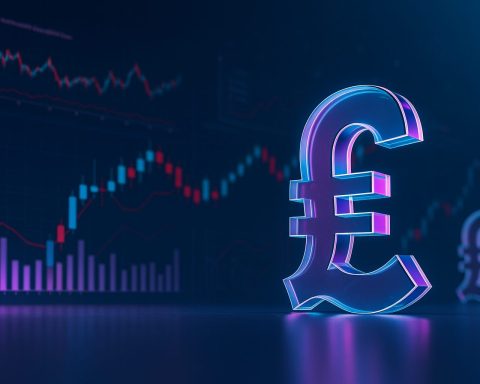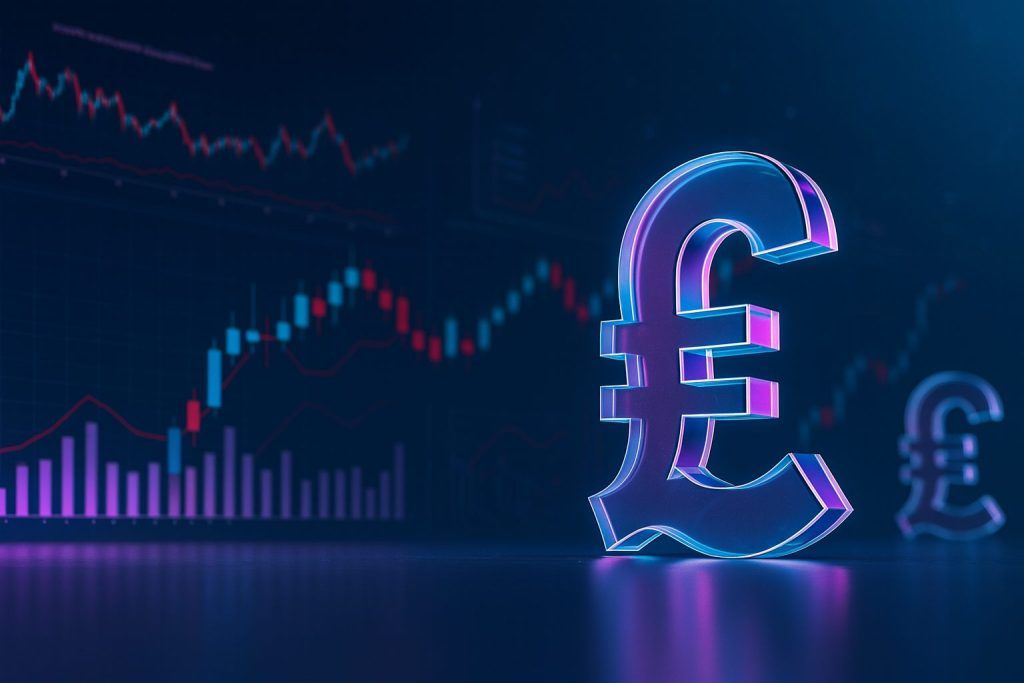Published: November 26, 2025
U.S. stock futures are pointing higher on the Wednesday before Thanksgiving as Wall Street rides a three-day winning streak and bets that the Federal Reserve will cut interest rates in December. At the same time, some of the market’s biggest story stocks — Nvidia, Apple, Bitcoin-linked names and Eli Lilly — are moving on fresh headlines that could shape trading into year‑end. [1]
Key Takeaways
- Dow, S&P 500 and Nasdaq futures are up 0.2%–0.35% early Wednesday, extending a three-day rally fueled by softer economic data and dovish Fed commentary that has pushed December rate‑cut odds to roughly 85%. [2]
- Tech remains volatile: Nvidia and AMD are under pressure again as investors digest reports of a deepening Alphabet–Meta AI chip partnership, even after Nvidia reported blowout earnings last week. [3]
- Apple stock is supported by a powerful rebound in China iPhone sales, with the new iPhone 17 helping Apple reclaim roughly a quarter of the Chinese smartphone market and posting 22%–37% year‑over‑year growth in October. [4]
- Bitcoin has dropped about 31% in November to near $82,000, but is trying to stabilize above key support as JPMorgan upgrades selected miners on stronger high‑performance computing demand. [5]
- Eli Lilly is trading around a $1 trillion valuation as demand for GLP‑1 weight‑loss drugs surges and newer candidates like the amylin analogue eloralintide and oral GLP‑1 pill orforglipron show mid‑ to late‑stage trial promise. [6]
Dow Jones Futures Today: Rally Extends As Rate-Cut Hopes Build
In early U.S. trading, futures for all three major indexes are modestly higher:
- Dow Jones Industrial Average futures: +0.2%
- S&P 500 futures: +0.27%
- Nasdaq 100 futures: +0.35% [7]
Those moves follow a strong Tuesday session in which:
- The Dow jumped about 664 points (+1.4%) to 47,112,
- The S&P 500 gained 0.9% to 6,765.88, and
- The Nasdaq Composite added 0.7% to 23,025.59,
marking a third straight up day and the S&P’s highest close in about two weeks. [8]
Sector performance has started to broaden. Health‑care and consumer discretionary stocks led Tuesday’s gains, and the CBOE Volatility Index sank under 19, signaling calmer conditions after a choppy start to November. [9]
The backdrop: a market that was rattled earlier this month by fears of an “AI bubble” and tariff‑driven inflation is now leaning into rate‑cut optimism.
Dovish comments from several Fed officials have pushed probabilities of a quarter‑point cut in December to roughly 85%, up from about 40% a week ago, according to futures pricing tracked by CME’s FedWatch tool and summarized by Zacks and Reuters. [10]
Data Watch: Jobless Claims, Durable Goods, GDP And The Beige Book
Today is data‑heavy, and that’s crucial because the Fed has made clear its decisions depend on incoming numbers:
- Initial jobless claims for the week ending Nov. 22 are due at 8:30 a.m. ET, alongside a delayed September durable goods report, both of which were pushed back by an earlier federal shutdown. [11]
- The Fed will also release its Beige Book at 2 p.m. ET, offering a qualitative snapshot of regional economic conditions ahead of the December meeting. [12]
- Other rescheduled releases this week — including retail sales and producer price data — point to cooling inflation and softer consumer demand, consistent with Tuesday’s report showing September retail sales missing expectations. [13]
We’ve already seen some important signals:
- Durable goods orders for September are expected to show slower growth after a big August rebound, hinting at a gradual downshift in business investment. [14]
- The Conference Board’s consumer confidence index fell sharply to 88.7 in November, its lowest level since April, with expectations about future conditions stuck in a range historically associated with rising recession risk. [15]
In short, the market is cheering the idea that growth and inflation are cooling just enough to justify lower rates — but not so much that a deep downturn looks imminent.
AI Chip Turbulence: Nvidia And AMD Slide As Alphabet Flexes Its Muscle
Despite the broader rally, Nvidia (NVDA) remains under pressure — a key storyline that runs through all of this week’s market coverage.
On Tuesday, Nvidia and fellow chipmaker AMD were among the biggest decliners in the S&P 500 after reports that Meta is exploring a large, multi‑year commitment to Alphabet’s in‑house AI accelerators for its data centers. That raised fears that some future demand could shift away from Nvidia’s flagship GPUs. [16]
At the same time, an Investopedia analysis notes:
- Nvidia just delivered record quarterly revenue and earnings, beating already‑lofty expectations.
- Yet the stock is down more than 8% since the earnings release and roughly 17% below its late‑October peak, when the company briefly became the world’s first $5 trillion company on AI euphoria. [17]
That disconnect reflects a bigger debate:
- Is Wall Street overestimating AI demand, leaving hyperscalers like Microsoft and Oracle at risk of over‑building data centers and piling on debt?
- Or is demand real, but capital is being spent inefficiently, with vendors and cloud providers racing ahead of proven returns? [18]
In pre‑market trading Wednesday, Nvidia and AMD are again modestly lower, while Alphabet is edging higher and flirting with a $4 trillion valuation, underscoring the market’s appetite for companies seen as gaining AI pricing power rather than paying for it. [19]
For investors, the takeaway from these pieces is clear: AI remains the market’s main growth story, but leadership may shift inside the ecosystem, and even spectacular earnings aren’t always enough when expectations are sky‑high.
Apple Stock Today: China iPhone 17 Demand Becomes A Tailwind
If Nvidia represents the AI side of the tech trade, Apple (AAPL) is currently the poster child for demand recovering in hardware.
Multiple recent reports from Reuters, Zacks and others show that:
- Apple’s iPhone sales in China rose about 22% year over year in the first month after the iPhone 17 launch, reversing a 5% decline after last year’s iPhone 16 rollout. [20]
- October data from Counterpoint Research indicate iPhone 17 models accounted for nearly 80% of Apple’s Chinese smartphone sales and drove a 37% surge in iPhone volumes versus a year earlier. [21]
- That performance pushed Apple back to around 25% market share in China, roughly one in every four smartphones sold — a level it last consistently enjoyed before domestic rivals intensified competition. [22]
Wall Street analysts highlighted in recent coverage still broadly rate Apple a “Moderate Buy”, with average 12‑month price targets implying meaningful upside from current levels, helped by:
- Strength in iPhone 17 and the broader iPhone lineup,
- Ongoing growth in Services (App Store, iCloud, Apple Music), and
- A supportive upgrade cycle around new on‑device AI “Intelligence” features expected to roll out more widely in 2026. [23]
For the broader market narrative, Apple’s rebound in China matters because it undercuts the idea that global consumer demand is universally falling off a cliff. Instead, consumers appear willing to spend when they see a meaningful jump in features — even in a higher‑rate environment.
Bitcoin Today: A 31% November Crash, Key Support And JPMorgan’s Mining Call
While stocks grind higher, Bitcoin (BTC) is in the middle of a brutal but closely watched pullback — and that’s a recurring theme in both the Investopedia‑style “5 things” rundowns and today’s crypto coverage.
According to detailed analysis from The Economic Times:
- Bitcoin has fallen about 31% so far in November, dropping from above $120,000 earlier this year toward roughly $82,000 as rising Treasury yields, hawkish Fed messaging and around $2 billion in liquidations hit sentiment. [24]
- Analysts see a critical support zone between $84,000 and $86,000; a decisive break below that band could open the door to a deeper correction, while sustained trading above roughly $84k–90k is viewed as a base for a 2026 rebound. [25]
- Despite the volatility, ETF flows into vehicles like Fidelity’s FBTC and BlackRock’s IBIT remain positive, and on‑chain data shows continued “whale” accumulation. [26]
At the same time, JPMorgan has overhauled its view of the mining sector, upgrading Cipher Mining and CleanSpark to “Overweight” and sharply raising its valuation range for high‑performance computing (HPC) colocation capacity from roughly $4–9 million per megawatt to $8–17 million. [27]
The bank argues:
- Traditional Bitcoin mining is increasingly commoditized,
- But HPC and AI‑related hosting could justify much higher multiples, especially for miners with large, underutilized power portfolios like Cipher and CleanSpark. [28]
Taken together, the message from today’s crypto coverage is nuanced: the Bitcoin price path may be rocky in the short term, but institutional demand, ETF adoption and the pivot of miners toward AI‑adjacent businesses are keeping the longer‑term bullish case alive.
Eli Lilly And The Next Phase Of The Weight-Loss Drug Boom
The third major stock theme threaded through recent “Dow futures” and “5 things” reports is Eli Lilly (LLY) and the broader GLP‑1 boom.
Over the past week:
- Lilly briefly became the first pharmaceutical company to reach a $1 trillion market value, powered by surging sales of obesity and diabetes drugs like Zepbound and Mounjaro and revenue growth north of 50%. [29]
- The company and its academic collaborators released detailed Phase 2 data on eloralintide, an investigational amylin analogue for obesity. Patients on the highest dose lost around 20% of their body weight over 48 weeks, versus roughly 0.4% for placebo. Lilly plans to start Phase 3 trials before year‑end. [30]
- Separate HealthDay coverage highlighted promising results for orforglipron, Lilly’s oral GLP‑1 pill, which could further expand the addressable market if late‑stage trials confirm its efficacy and safety. [31]
There are important competitive currents here:
- Novo Nordisk just reported strong mid‑stage data for its own next‑generation obesity drug amycretin, which combines GLP‑1 and amylin activity and achieved up to 14.5% weight loss in patients with type 2 diabetes. [32]
- The Trump administration’s Medicare deal to dramatically cut prices of Novo’s Ozempic and Wegovy — as well as some Lilly products — in exchange for wider coverage shows that pricing and volume are now as critical as the science in this space. [33]
For markets, the GLP‑1 story now has two layers:
- Near‑term earnings momentum, which has turned Lilly into a mega‑cap growth darling and pulled other healthcare names along with it. [34]
- Long‑term questions about sustainability, including competition from Novo and others, regulatory scrutiny on safety and pricing, and the potential for new mechanisms like amylin analogues to change the game again in a few years. [35]
How Today’s Themes Tie Back To The “5 Things” Playbook
The three sources you referenced — Investopedia’s “5 Things to Know Before the Stock Market Opens,” Investor’s Business Daily’s Dow futures coverage, and Yahoo Finance’s pre‑market rundown — all follow a similar template: look at index futures, then run through crypto, mega‑cap tech, and a handful of key single‑stock stories.
For today, November 26, 2025, that translates into a few big-picture narratives:
- Macro is driving the tape.
Futures are higher because softer inflation, weaker consumer confidence and cautious retail sales are being interpreted as justification for at least one more rate cut, even as investors stay alert to recession risks. [36] - AI isn’t going away — but leadership is rotating.
Nvidia’s fundamentals remain exceptional, but competition from in‑house chips at Alphabet and potential over‑investment fears are forcing investors to separate AI “plumbing” winners from over‑extended valuations. [37] - Consumer tech is more resilient than headlines suggest.
Apple’s China numbers show that when products deliver a clear upgrade, consumers still show up — an important counterweight to gloomy surveys about household confidence. [38] - Crypto and GLP‑1 are the high‑beta edges of the risk trade.
Bitcoin’s 31% slide and Lilly’s $1 trillion valuation are both manifestations of investors crowding into powerful narratives, then adjusting as data and policy shift. [39]
What Investors Might Consider Heading Into Thanksgiving
Nothing here is personal investment advice, but taken together, today’s coverage suggests a few broad principles:
- Expect thinner liquidity and sharper intraday moves around today’s data releases and into the holiday, as many institutions scale back activity.
- Don’t confuse rate‑cut optimism with a guaranteed soft landing. Falling consumer confidence and slower retail sales show real strain beneath the surface, even as markets cheer lower yields. [40]
- Treat AI and GLP‑1 exposure as long‑term themes, not one‑way bets. Nvidia, Apple, and Eli Lilly are all leaders in their spaces, but recent volatility underscores how quickly sentiment can swing when expectations are extreme. [41]
- Recognize that crypto remains highly sensitive to macro headlines. Bitcoin may benefit from eventual rate cuts and ongoing ETF adoption, but the path from here is unlikely to be smooth. [42]
As always, it’s wise to align any moves with your own risk tolerance, time horizon and financial plan — and to consult a qualified financial adviser before making major portfolio changes.
References
1. www.reuters.com, 2. www.reuters.com, 3. www.investopedia.com, 4. finance.yahoo.com, 5. m.economictimes.com, 6. www.emarketer.com, 7. www.reuters.com, 8. www.nasdaq.com, 9. www.nasdaq.com, 10. www.nasdaq.com, 11. www.reuters.com, 12. www.reuters.com, 13. m.economictimes.com, 14. www.investing.com, 15. www.nasdaq.com, 16. www.investopedia.com, 17. www.investopedia.com, 18. www.investopedia.com, 19. www.reuters.com, 20. finance.yahoo.com, 21. www.zacks.com, 22. www.reuters.com, 23. www.zacks.com, 24. m.economictimes.com, 25. m.economictimes.com, 26. m.economictimes.com, 27. m.economictimes.com, 28. m.economictimes.com, 29. www.emarketer.com, 30. www.reuters.com, 31. www.drugs.com, 32. www.reuters.com, 33. www.ft.com, 34. www.nasdaq.com, 35. www.marketwatch.com, 36. www.nasdaq.com, 37. www.investopedia.com, 38. www.reuters.com, 39. m.economictimes.com, 40. www.nasdaq.com, 41. www.investopedia.com, 42. m.economictimes.com










